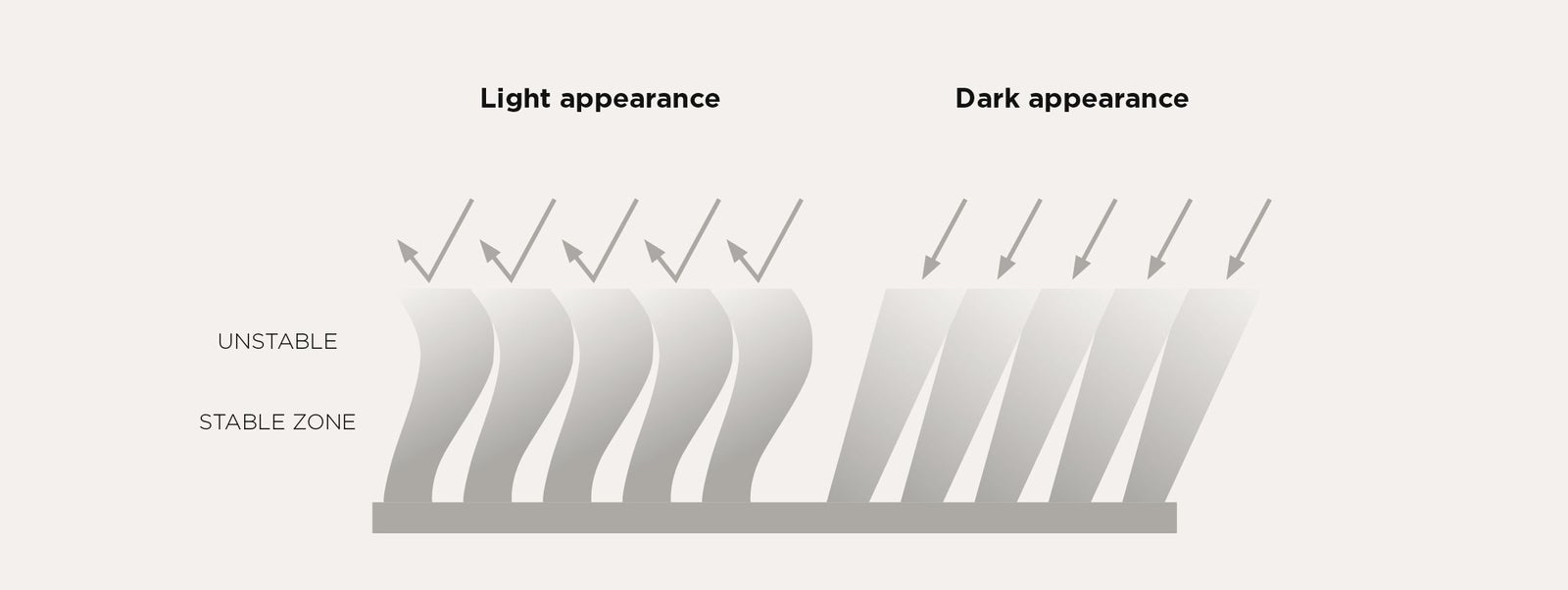Resources
Carpet Pile Reversal & Stretching Explained
Pile Reversal
Cut pile carpets (including plush/shaggy pile carpets) can have a stunning appearance, however some tend to develop pile reversal (also known as tracking, shading, pooling or watermarking). Pile reversal changes the appearance of some areas of a carpet and is best described as if water has been spilt on the carpet/pooling of water on the carpet.
In instances of pile reversal, areas of the carpet appear to become lighter or darker than the surrounding area, depending on the angles from which they are viewed. What is happening to cause this is a change to the direction in which the pile naturally sits. The appearance of shading then occurs because light catches differently on the greater surface area of carpet to the side of the bending fibres facing a different direction. The cause of this phenomenon are not understood and cannot be predicted or prevented.
Pile reversal does not affect the wear or durability of the carpet and is beyond the control of the manufacturer or installer and is therefore not considered a defect or manufacturing fault, but an inherent fibre characteristic. This is corroborated by The Carpet and Rug Institute, and further reading on this topic can be found in their manual titled ‘Pile Reversal (Shading, Water Marking)’.
Although this phenomenon is relatively rare, it is important to be aware of the potential risk of this occurring on your installation. If you wish to reduce your exposure of having this happen in your home, consider loop pile or textured/patterned carpet styles.
Carpet Restretching
Carpet, like other textile products (such as a pair of jeans or a t-shirt), is known to stretch. You can spot a carpet that needs a re-stretch by the visual looseness and ‘bagginess’ of the carpet. It will look more relaxed than when it was first installed. Other tell-tale signs are what can be described as ‘waves’ in the carpet. These ripples and wrinkles are created when the stretched carpet bunches in one area due to traffic across the floor. It is important to have your carpet re-stretched as soon as you notice these symptoms as constant traffic over these carpet ‘waves’ will lead to the flooring wearing down unevenly in these areas causing permanent damage.
Re-stretching carpet is considered a regular part of carpet maintenance, similar to vacuuming and steam cleaning if appropriate for the fibre type. Carpet re-stretching may need to be carried out as soon as 2 years from when your carpet was installed. Carpet requiring re-stretching outside of this period is not an installation fault, rather a characteristic of the flooring.
There are a number of variables involved that lead to carpet stretching faster in some homes than others. The four most common reasons are:- Temperature and humidity are one of the major contributors to carpet buckling. The moisture in a humid environment will cause the carpet to swell and stretch.
- Excessive wear due to traffic, particularly if wheelchairs, walkers, kid’s tricycles etc. are moving across the floor.
- Sliding heavy furniture across carpet can create ripples or separate the carpet from the smooth-edge (nailed tacks) around the perimeter of the room that holds the carpet in place. We recommend that you lift furniture rather than slide it, to avoid damage.
- Improper selection of carpet underlay can have an impact on the carpet wearing and stretching. Having no underlay or underlay that is very thin, may not provide enough grip for the traffic moving across the carpet leading to increased movement and stretching.

